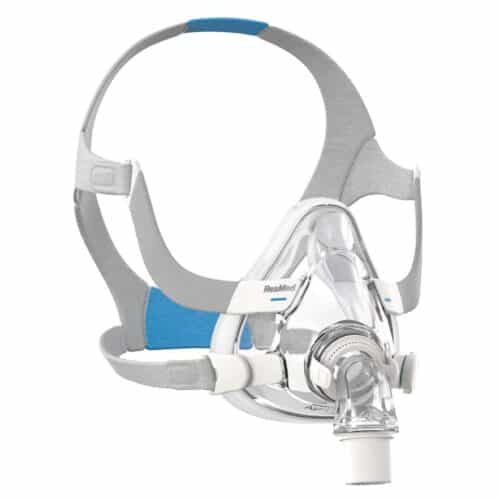Get 10% off your order!
Sign up below for PAP’s Newsletter, and keep an eye on your inbox for a one-time code. Offer not available on sale items.
From mood changes and health risks, to increased accidents and a lack of balance, there are a myriad of reasons why you must ensure that you — and any employees you may have — are rested and not suffering the ill-effects of poor sleep or worse, sleep deprivation due to Obstructive Sleep Apnea (OSA).
Read on to learn more about the risks of leaving this disorder untreated and the benefits of implementing a sleep care program for yourself as well as those who keep your business running smoothly and safely.
According to a recent research abstract, untreated OSA results in job performance deficiencies such as excessive sleepiness, cognitive dysfunction, irritability and reduced vitality. In the words of the principal investigator, Dr. Clelia Lima (emphasis ours):
“Companies may become proactive in screening and treating their employees for OSA due to the predicted financial benefit,” she said. “The importance goes beyond the improved cognitive function and savings of millions of dollars in work performance, since treating OSA adds other health benefits.”
While the truth is that Sleep Apnea affects all types of people of all shapes and sizes including children, women, the elderly, and men; there are common factors that do put one at higher risk of developing (or worsening) sleep apnea.
RISK FACTORS FOR SLEEP APNEA
- Being overweight
- Family history of sleep apnea
- Narrow airways and/or recessed chin
- Large neck size (17” or more for men, 16” or more for women)
- Being more than 40 years old
- Smoking and/or alcohol use
SYMPTOMS OF SLEEP APNEA
- Snoring
- Excessive Daytime Sleepiness (EDS)
- Irritability, depression, and/or anxiety
- Morning headaches
- Troubles concentrating
- Dry mouth upon waking
- Loss of sex drive
- Waking up gasping for air
- Frequent nighttime urination and/or disturbed sleep
In order to determine whether or not someone is suffering from Obstructive Sleep Apnea, we need to determine if they are losing oxygen while they sleep based on the apnea-hypopnea index (AHI).
Sleep Apnea is when you stop breathing for ten seconds or more while you’re asleep. You might wake up many times during the night to "catch your breath," but you probably won’t notice it unless a partner points it out.
And yes, dear reader, this means we must monitor your breathing while you sleep. Back when our grandparents had to walk to school uphill both ways, the only way for us to conduct such a sleep study was to send you to an overnight lab facility and hook you up to approximately 64 billion wires and sensors and wish you, “good luck” as you attempt to sleep in an unfamiliar bed like a futuristic cyborg.
Thankfully, technology has come a long way in prioritising the comfort of the patient and we can now successfully diagnose obstructive sleep apnea with a disposable at-home sleep study (yes, at your home!), also referred to as a sleep test. You wear a little doo-dad on your finger, stick one sensor on your chest and let the device do the rest, while we monitor you accurately via the cloud. Then we’ll be in touch in the morning with your results.
Because Sleep Apnea is… well…a sleep disorder, we can see higher prevalence in those who work graveyard/night shifts, are on-call, or who simply aren’t afforded the luxury of regular schedules. Let’s dig into the most affected professions:
- CMV or CDL truck drivers
- Shift Workers - security guards, police, doctors and nurses, firefighters, EMS, pilots, military
- Occupational Workers - construction, factory workers
Nearly one-third (28 percent) of commercial truck drivers have mild to severe sleep apnea, according to a study conducted by the University of Pennsylvania and sponsored by the Federal Motor Carrier Safety Administration (FMCSA) and the American Transportation Research Institute of the American Trucking Associations.
With long hours on the road, sometimes including the use of stimulants to stay awake for long stretches, truck drivers are some of the most susceptible professionals to be at risk for OSA. This, coupled with an often sedentary lifestyle make these individuals at such high risk that many states require CPAP therapy in order to even be able to drive a commercial motor vehicle (CMV) in interstate commerce.
For those who work non-traditional hours like split shift, graveyard shifts, early morning shifts, or rotating shifts, the prevalence of sleep disorders is so great that they’ve coined the term: Shift Work Sleep Disorder (SWSD).
The Cleveland Clinic estimates that between 10 to 40 percent of shift workers experience SWSD. And as mentioned above, those who have regularly shifting schedules are more likely to be affected as their circadian rhythm is in a constant state of flux.
This umbrella of workers includes, but is not limited to: security guards, doctors and nurses, firefighters, EMS workers, pilots and air-traffic controllers, active military, and police officers. I think we speak for us all in that we hope the above folks are well-rested and in tip-top shape both mentally and physically.
The builders and assemblers of our infrastructure and goods that make the world go ‘round; these folks, who work in OSHA-regulated fields such as Construction or Factory Work carry massive risks of occupational hazards while on the job. And while these regulating bodies enact safety guidelines whenever and wherever possible, they aren’t sleeping in the bed next to each employee to know if they’re suffering from a sleep disorder.
According to another research abstract, compared to controls, the odds of work accident was found to be nearly double in workers with OSA.
Thankfully, obstructive sleep apnea is the single most important preventable medical cause of excessive daytime sleepiness (EDS) and driving accidents.
Once you have received the results of your at-home sleep test, you will need two things: a CPAP Prescription and your CPAP device which includes a CPAP machine (or APAP or BiPAP machine) and a CPAP mask. Your Sleep Specialist will recommend the amount of positive airway pressure (the PAP in CPAP) that you need for your therapy and can even remotely monitor your treatment.
As one of the many workers in affected fields (either employee or employer), you may be required to provide CPAP compliance documentation to a regulating body, or just the business itself. This can be overwhelming for many, sometimes even resulting in an abandonment of therapy, which is why we’ve simplified the process all the way from testing and diagnosis to compliance and therapy monitoring.
Because we value your industry and hard-working staff as much as you do, we are over the moon to announce the cpapRX Sleep Partner Program — a turn-key solution that provides simple, at-home sleep test kits, new and renewed CPAP prescriptions, educational resources and workshops, special discounts on sleep products from all the top brands, and much more.
Should you wish to learn more about the cpapRX Sleep Partner Program or have any questions about our offerings, sleep therapy, or diagnostic tools, please take the first step today and reach out to our team. You can also always call 833-216-CPAP, email sleeptight@cpaprx.com or chat with us from the blue “Contact Us” button in the bottom left corner below. Let us help put your sleep to work.



Sign up below for PAP’s Newsletter, and keep an eye on your inbox for a one-time code. Offer not available on sale items.
SUBSCRIBE TO OUR NEWSLETTER Receive exclusive offers & insightful articles to enhance your sleep.
Search by product name, type or brand.
